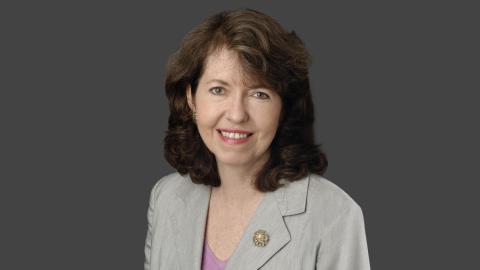__Editor's note: New York City Mayor Michael Bloomberg has decided to exclude religious leaders from the official ceremony commemorating the victims of Sept. 11, 2001. In this feature published on September 14, 2001, Melanie Kirkpatrick, then a Journal editor, explained the role of faith as New Yorkers responded to the terrorist attacks__.
New York
"May God have mercy on their souls."
I heard these words Tuesday morning, a few minutes past 9, uttered by the woman standing next to me in a street three blocks north of the World Trade Center. I had just emerged from the subway station, and we were together in the sea of people gazing up at the fireballs spewing from upper reaches of the Twin Towers. She spoke in full throat, as if she wanted to make sure that God could hear.
That was the first of many prayers I heard that day. As I walked north, joining the thousands of people moving uptown, I passed countless people with heads bowed and lips moving. It was a common sight: Men and women, standing in the bright sun, often with a briefcase or shopping bag in hand, would look up at the flaming towers and then close their eyes and bow their heads in prayer. At times the quiet, orderly exodus seemed more like a prayer vigil. New Yorkers may have a reputation as talkers, but on that day words often failed us.
About 11, I passed a portly, middle-aged man. He looked up at where the towers had stood and made the sign of the cross. He was rushing downtown as fast as his legs would carry him, wending his way briskly through the crowd heading in the opposite direction. He might have been a priest—he was dressed all in black—hurrying determinedly into danger. Indeed, at least one priest is already known to be among the dead. Father Mychal Judge, the longtime chaplain of the New York Fire Department, was among the first rescuers on the scene. He died alongside many of his colleagues.
Other clergymen and women rushed to hospitals. The cardinal of New York gave the last rites to victims at St. Vincent's Hospital. My colleague Susan Lee, who has written in this space, is also a student at Union Theological Seminary; she volunteered her services as pastoral counselor.
I had many blocks to walk that morning before I reached my apartment on the Upper West Side of Manhattan. As I walked, I began to notice the open doors of the houses of worship I passed. A few had hand-lettered signs saying they were open for prayer. I later learned that this was happening not just in New York. Churches and temples and mosques all over the nation were open for prayer that day. The 23rd Psalm—"The Lord Is My Shepherd"—was on the lips of many, including President Bush when he addressed the nation that night. For many of us, King David's resolve, "I fear no evil," never held so much meaning.
To those who don't know this city, New York may often seem a modern Sodom and Gomorrah. But to those of us who do, it is a shining City on a Hill, a city of magnificent churches, synagogues, and, increasingly, mosques and shrines and temples. In the shadow of the World Trade Center lay most of New York's oldest houses of worship.
Trinity Church, on Broadway at the head of Wall Street, was erected in 1846; for 50 years, long before the World Trade Center, it reigned as the tallest building in the city. An earlier home for the church was destroyed in the great fire of 1776. North of the World Trade Center is John Street Methodist Church, home of what may be the oldest Methodist congregation in the country. To the west is the World Financial Center and a small Roman Catholic chapel on the marina. Just across from the south tower, until Tuesday morning, stood St. Nicholas Greek Orthodox Church, a tiny, unimposing structure surrounded by a parking lot six times its size—and now, to judge by photographs and TV images, eerily absent.
Church Street borders the east side of what used to be the World Trade Center and takes its name from St. Paul's Chapel, Manhattan's oldest church. When I visited there a few years ago, I learned that every American president had worshipped at St. Paul's since it was built in 1766. President Bush may not have had had a chance to worship there yet. But when he does, like the New Yorkers with whom I was walking uptown on Tuesday, he will have a chance to say a prayer for those who died at the beautiful towers that once soared across the street.













